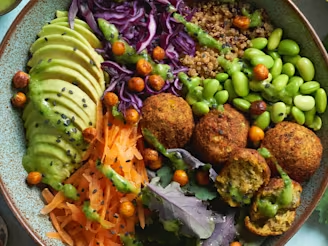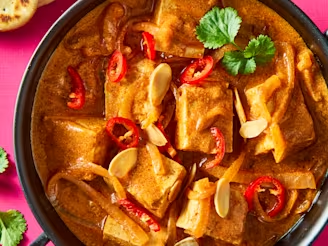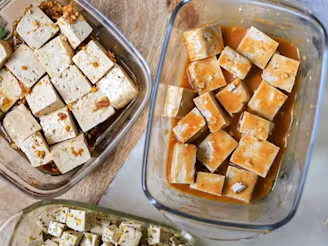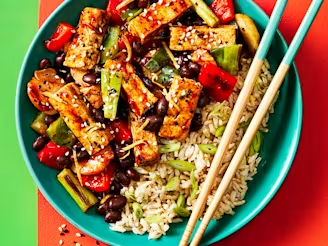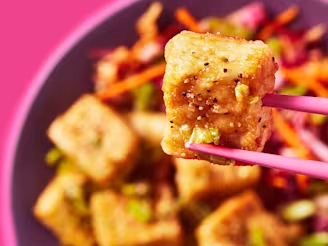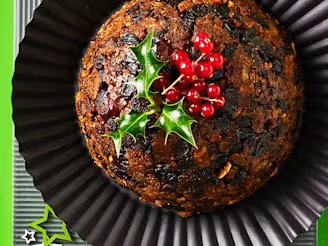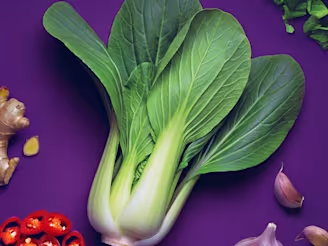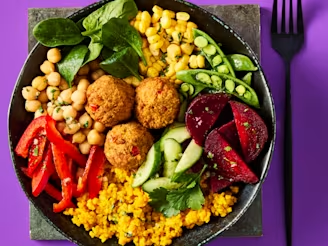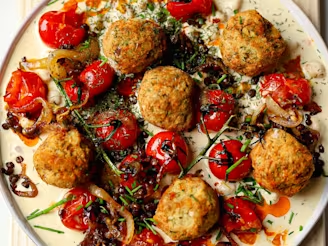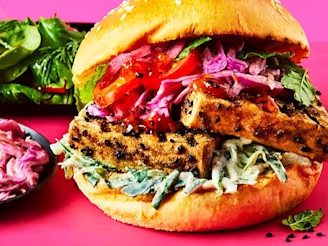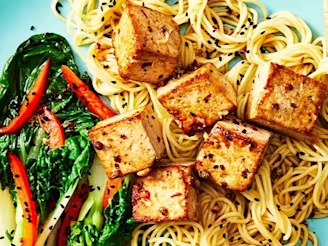What is Falafel? Top 10 Falafel Questions Answered
Updated 1st Oct 2025
Thinking about falafel? We do that a lot. Mmm… falafel. But before we get distracted by the thought of biting into the deliciously textured, subtly spiced tastiness... Oops. Now where were we? Oh yeah, about to answer some of your most frequently asked falafel questions. The top ten questions, and our top ten answers. Let’s get stuck in.
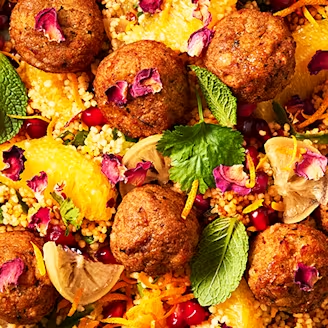
1. First up - what is falafel?
The origins of falafel lie in the Middle East. It’s been around so long that various countries claim to have been the first to come up with it. What we do know is that some clever person a long time ago had the idea of shaping ground chickpeas, herbs and spices into a small ball and cooking them until they crisped up on the outside yet stayed soft and fluffy on the inside. Genius. Today, we make two varieties, our Middle Eastern Plant-Based Falafels and our Moroccan Plant-Based Falafels.
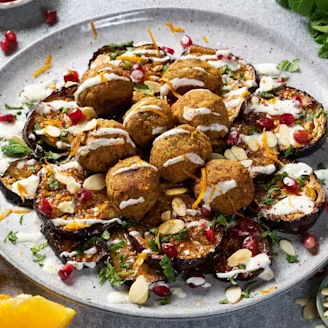
2. Is falafel healthy?
100% plant-based, falafel are an awesome source of fibre! Our Middle Eastern Falafel gives a punch of protein too. Chickpeas are a complex carbohydrate and are low in saturated fats. Traditionally fried, they can also be baked for a healthier snack. Like most foods, how you serve them makes a massive difference. Falafel is a great way to add bags of flavour to piles of crunchy salad (add all the salad you like). It’s often served with dressings, so slathering it in mayo will up the calories over a low-fat yogurt dressing.
3. What is falafel made from?
If you were paying close attention, you’ll have seen that the core ingredient of falafel is chickpeas. These are ground up, then smushed up with an array of tasty herbs and spices. Our Middle Eastern Plant-Based Falafels include classic flavours of cumin and coriander, plus a sprinkling of parsley and a touch of garlic. To add a North African flavour to our Moroccan Plant-Based Falafels, there's a mouthwatering spice mix. Think dates and apricot, paprika, garlic and chilli, plus a delicious dusting of cumin, coriander and ginger.
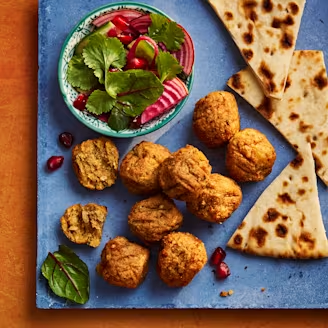
4. What are the tastiest falafel recipe ideas?
Being asked what the tastiest anything is can be controversial. The only way to decide is surely to try every recipe for yourself! So here are a few for you to get started on. And when you’ve tried every possible combination of ways to enjoy falafel, we’d love you to tell us the tastiest!
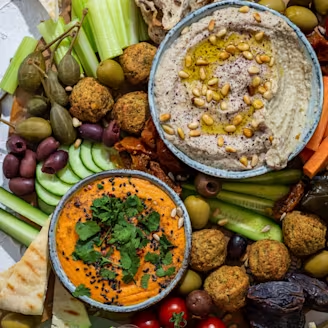
Let’s start with a classic Middle Eastern Mezze Platter. Pile on the olives and dates, stuff some vine leaves, and slice up celery, cucumbers and carrots. Don’t forget the baba ganoush and hummus, and, of course, the falafels! Perfect for parties, yet simple enough for snacking, this looks as amazing as it tastes. Salad fans might want to try our Carrot Ribbon Salad with Falafels or Kale, Pumpkin & Falafel Salad, or maybe make up a vegan Buddha Bowl like this one with avocado dressing. For something a little different, try these Falafel Traybake Tacos - ideal for a family dinner. Or perhaps start the day with a Shakshuka Breakfast with Falafels.
Super versatile as well as delicious, our falafels can be eaten hot or cold. So get creative, whether it’s a quick lunch or prepping up party food. The tastiest falafel recipe ever might be the one you haven’t accidentally invented… yet.
5. How do you cook falafel?
Our falafels are ready to eat right from the pack. (Which can be tempting when you’ve a pile of them ready to warm up - sorry about that.) Because you can eat them cold, they’re a handy people-pleasing option for picnic baskets, lunch boxes, and quick, easy snacks. If you want them hot, you can heat them in the oven (200°C for 12 mins) or pop them in the air fryer (180°C for 10 mins). If the recipe calls for it, you can shallow fry them too. Just make sure they’re lovely and hot all the way through from the crisp outer to their soft, delicious centre.
6. What’s best to serve with falafel?
There are sooo many fabulous foods for fantastic faff-free falafel dishes that we already wrote a blog about it here. They work beautifully in mezze platters, as well as in wraps, with salads, and as snacks. One super easy way to think about what you serve with your falafels is the famous falafel rule of three (which we just made up). Add something from each of these three categories and you’ve mastered a falafel-based meal. Simply mix and match the foods you love.

Dips
Crumbly chickpea-based falafels are elevated by a saucy accompaniment. That may be something Middle Eastern inspired, like hummus, garlicky Lebanese toum, or baba ganoush. Or try it with some of your other much-loved sauces, such as chimichurri, creamy tzatziki, or sweet chilli sauce.
Carbs
Pita breads and wraps are a firm falafel favourite (with good reason). Homemade flatbreads can be surprisingly simple to make, so maybe try falafel with your own version. But if you want to switch from bread-based carbs, there are an abundance of grains that pair perfectly with falafel. Almost anything goes, from bulgar wheat to basic rice, or North African-favourite cous cous (spice things up by adding your own flavour, such as rose harissa or lemon and chilli).
Salads
Falafel gives any salad a bowl full of pizzazz. Perhaps you could work your way through an alphabet of fresh veggies? Avocado, beetroot, cucumber, dates, edamame beans… There are very few salad veggies that won’t work with the crisp yet soft textures and subtle spice flavours of falafel.
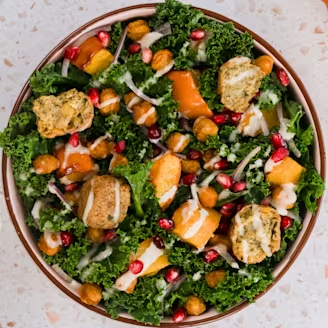
7. So what does falafel taste like?
Well, how do you describe biting through a crisp outer layer into a deliciously soft, ever-so-slightly moist centre? Or a delicate spice that warms without overpowering, and herbs that add depth to a mildly earthy chickpea base? Maybe we just did! Soft and savoury with subtle spices, it’s not easy to find another food to directly compare these delicious bites with.
8. Is falafel vegan or vegetarian?
Our falafels are vegan all the way. Popping with plant-based goodness, they’re ideal for quick vegan party food. If you’re preparing a picnic, packing up lunch, or looking for a tasty meat and dairy-free snack, falafels are always pleased to be your faff-free friend.
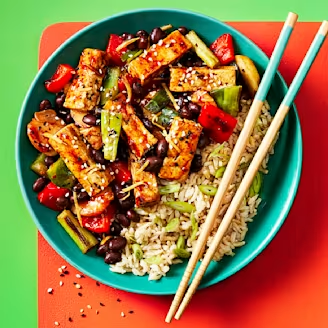
9. Can you freeze falafel?
Yes! Falafel is freezable. You can pop packets of falafel in the freezer on the day you buy them, and keep them frozen for up to a month. Ideal if you want to have plenty of falafel to hand (and in your mouth).
See our packs for storage information!
10. Where does falafel originate from?
This is a question we can’t answer. No one can! There are plenty of countries who will tell you they are the origin of this beautiful bite, but it’s been around so long ago that nobody can be sure. (A bit like those tales from older relatives that get more elaborate with every retelling.)
It is fair to say falafel started somewhere around the Middle East. Many Egyptians will tell you they first made falafel, although with fava beans rather than chickpeas. Falafels then traveled across the Levant (think modern-day Israel, Palestine, Lebanon, Syria, and Jordan) where chickpeas’ flavour were favoured, and many now claim it as a national dish. Of course, something tasty wasn’t going to stay in one place too long. The wonder that is falafel has now spread far and wide, tickling taste buds all over the world.
The big bonus question
Those are our top ten falafel-based questions (and answers), but there is another important one yet. Just where can you get your hands on, and teeth into, some tasty falafels? Phew. That’s an easy one. Check out the chillers of the well-known supermarkets, online or on foot. Look for the meat-free/plant-based section which is where we’ll be.
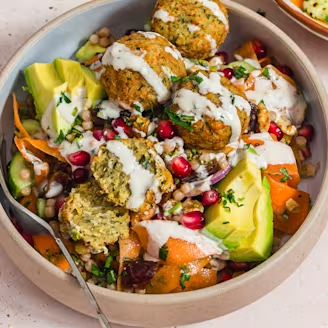
Hungry for more? Our FAQ section covers off even more questions in and around our falafels, from storage instructions to nutritional content. Take a look here.
Get stuck in
Our blog’s bursting with tips and ideas, info and inspiration. It’s all the stuff about plants that we couldn’t wait to share (but didn’t know where else to put!) There’s so much to get your teeth into.
